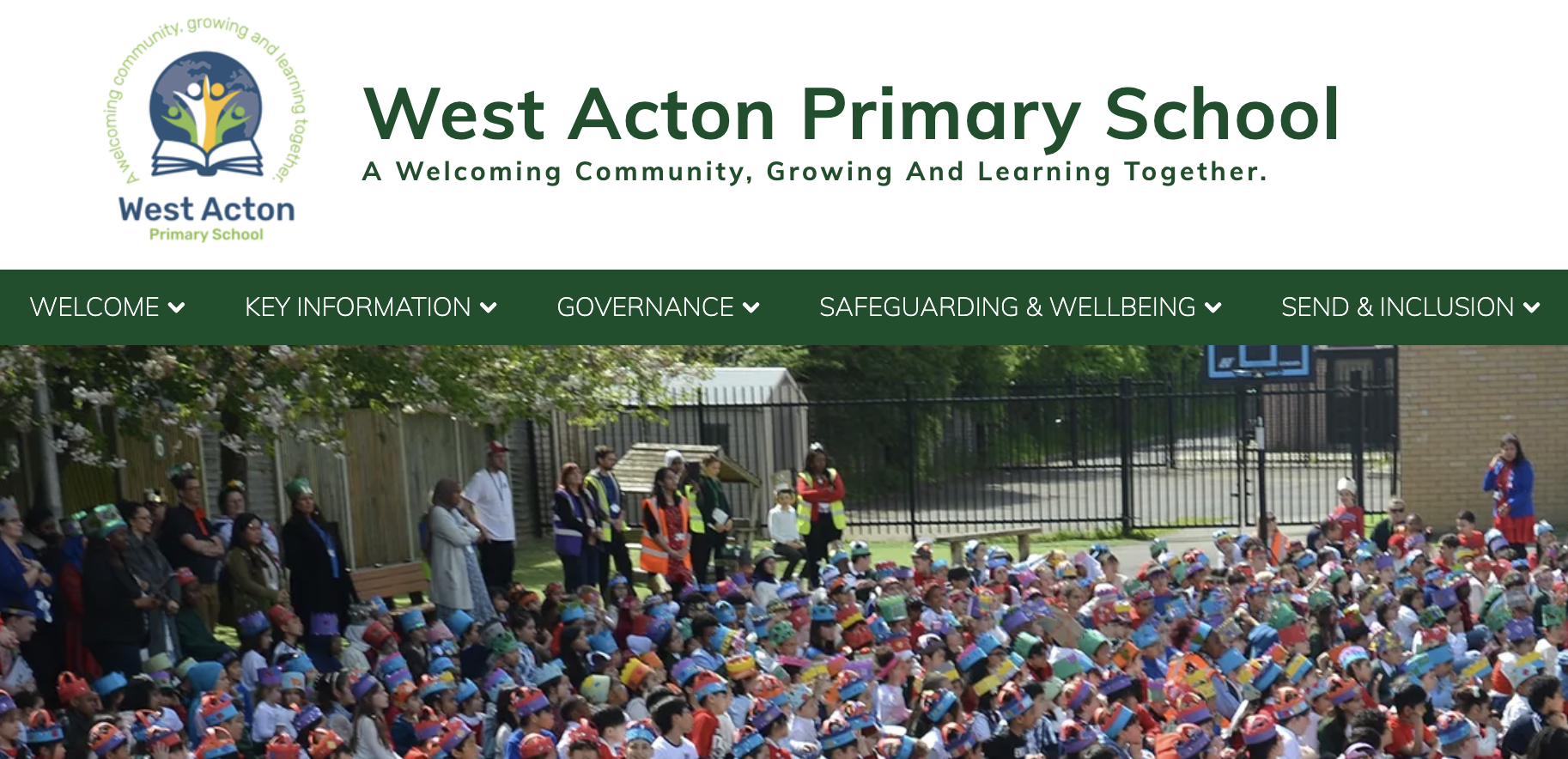
Crossley Street Primary School Website Launch Overview
Crossley Street Primary School, located in Wetherby, West Yorkshire, has recently refreshed its online presence with a comprehensive, user-friendly website. This new digital platform aims to provide detailed insights into the educational and extracurricular opportunities offered by the school, catering to students from Nursery through Year 6.
The website stands out for its clean design and easy navigation, which improves access to key sections like admissions, curriculum details, and news updates. It effectively communicates the school’s mantra of “Inspiring Today to Achieve Tomorrow,” highlighting its commitment to fostering an environment where students can thrive academically and personally.
Educational and Community Engagement Highlights
Crossley Street Primary School’s website features a robust “Curriculum” section that outlines the subjects taught, including Phonics, Maths, Science, and Art, ensuring parents and students are well-informed about educational offerings. Additionally, it emphasises the school’s efforts in promoting “British Values” and “Cultural Capital,” which are integral to their educational ethos.
The “Newsroom” section is regularly updated with newsletters and announcements, making it a vital resource for current and prospective families to stay connected with the school’s activities and achievements. This section also details the various awards given to students, celebrating their academic and extracurricular achievements.
Community and Parental Involvement
The website fosters community interaction through its comprehensive coverage of school events and the active involvement of the “Friends of School” group. It also offers a detailed look into the “Before and After School Club,” providing essential information to parents about after-school care options, which is invaluable for working parents.
Access and Communication
Ease of access is a significant advantage of the new website. Prospective and current parents can find detailed information about school policies, term dates, and the admissions process streamlined for better understanding. The inclusion of a contact section with the school’s address, phone number, and email ensures that parents and guardians can easily reach out for more information or assistance.
Crossley Street Primary School’s new website is a testament to its commitment to transparency and communication with its community. By providing a thorough digital resource for everything from the school’s curriculum to community involvement opportunities, it plays a crucial role in supporting the school’s mission to inspire and achieve excellence in education.
For a more detailed exploration, please visit their website directly at Crossley Street Primary School.

West Acton Primary School Website Launch Overview
West Acton Primary School in London has unveiled its updated website, designed to provide comprehensive information about the school’s activities, curriculum, and community engagement. The website serves as an essential tool for parents, students, and staff, offering a detailed overview of the educational and extracurricular opportunities available.
Educational Excellence and Curriculum
The school prides itself on a rich curriculum that emphasises inclusivity and diversity. Key stages are clearly delineated, providing parents and students with easy access to relevant educational content and resources. The curriculum extends beyond traditional academics, incorporating elements such as a strong focus on environmental awareness and physical education.
Community and Parental Involvement
West Acton Primary School’s website highlights its dedication to fostering a strong community connection. It features a dedicated section for parents, offering resources like after-school care, uniform guidelines, and details on the Parent-Teacher Association (PTA). This section is instrumental in facilitating effective communication between the school and families.
Support for Diverse Needs
The school is committed to supporting all students, including those with special educational needs and disabilities (SEND). The website provides comprehensive information about the school’s SEND policies and the Woodlands ARP (Additionally Resourced Provision), which caters to students with specific needs, ensuring they receive the appropriate support to succeed academically and socially.
Safeguarding and Wellbeing
Safeguarding is a priority at West Acton Primary School. The website outlines various policies and initiatives aimed at ensuring the safety and wellbeing of its students. This includes anti-bullying measures, online safety, and a healthy eating program, all of which contribute to a safe and nurturing environment for students to learn and grow.
The newly launched website of West Acton Primary School is a testament to its commitment to educational excellence and community engagement. It serves as a window into the school’s ethos of respect, tolerance, and high academic standards, designed to prepare students for a successful future.
For a more detailed exploration, you can visit their website directly at West Acton Primary School.

Durrington Junior School Website Launch Overview
Durrington Junior School has launched an informative and accessible website that reflects its commitment to a broad and balanced curriculum rooted in the school’s Church of England ethos. The site is a comprehensive resource for parents, students, and the school community, offering detailed insights into the school’s activities, academic programs, and community involvement.
Curriculum and Academic Focus
The school offers a dynamic curriculum designed to cater to the educational needs of children aged 7 to 11. It emphasises core academic subjects such as Maths and English, and integrates these with a diverse range of subjects including History, Geography, Science, and Computing. The curriculum is regularly reviewed and adapted to meet the needs of its students, ensuring relevance and engagement. Special emphasis is placed on the White Rose Maths scheme to structure the Maths curriculum, reflecting a commitment to high academic standards.
Community Engagement and Support
The website highlights various aspects of parent and community engagement, with detailed sections on parent support, learning resources, and school policies. It offers a dedicated area for parental information, including guides on uniforms, school meals, and a calendar of academic events, ensuring parents are well-informed and involved in the school community (Durrington Junior School).
Inclusion and Safeguarding
Inclusivity and safeguarding are prominently featured, with specific policies and resources dedicated to ensuring a safe and supportive environment for all students. This includes extensive support for students with additional needs and a robust safeguarding policy that is integral to the school’s operations.
Ethos and Values
Grounded in its Christian values, the school promotes a respectful and caring community where students are taught to be kind, truthful, and environmentally conscious. The school’s ethos is woven into all aspects of school life, aiming to develop well-rounded individuals who respect themselves and others (Durrington Junior School).
Durrington Junior School’s new website serves as a reflection of its ethos of “Love your neighbour as yourself,” and provides parents, students, and staff with easy access to important information about school life and the curriculum. It acts as a crucial tool in supporting the school’s mission to provide a nurturing and effective learning environment.
Explore more about Durrington Junior School by visiting their website here.

Bidbury Junior School Website Launch Overview
Bidbury Junior School in Havant, Hampshire, has updated its website, offering an extensive platform that provides detailed insights into the school’s operations, values, and community engagement. This new website aims to serve as a comprehensive resource for parents, students, and the broader community.
Educational and Community Engagement Highlights
Bidbury Junior School’s website is structured to showcase its commitment to fostering an environment where children are encouraged to develop respect, independence, focus, resilience, boundaries, and self-regulation. The website clearly outlines the school’s core values and how these are integrated into daily school life, promoting a culture where students are prepared to meet their potentials both academically and personally.
Curriculum and Extracurricular Activities
The website details a robust curriculum supported by various extracurricular activities that enhance the learning experience. It includes information on the school’s adherence to the National Curriculum with specific focus areas in subjects like Maths, Reading, and Science, ensuring comprehensive educational coverage. The school also emphasises physical education and sports, showing its dedication to student health and teamwork skills.
Parental Involvement and Resources
Bidbury Junior School actively encourages parental involvement, providing various resources on the website to help parents stay informed and engaged in their children’s education. This includes access to school policies, admission procedures, uniform guidelines, and an academic calendar. The site also features sections on school development plans and GDPR compliance, ensuring transparency and security of information.
Inclusion and Support
The website includes dedicated sections for Pupil Premium and Special Educational Needs and Disabilities (SEND), highlighting the school’s approach to inclusivity and tailored support for all students. This demonstrates the school’s commitment to providing an equitable learning environment.
Performance and Progress
The school’s recent performance metrics indicate a solid foundation in teaching, with most students meeting the expected standards in key subjects like Maths and Reading. However, the progress scores suggest there are areas needing improvement, particularly in ensuring all students make expected gains across key stages.
The newly revamped website of Bidbury Junior School acts as a gateway for the community to explore and understand the school’s educational offerings, policies, and community initiatives. It reflects the school’s mission to nurture young minds in a supportive and inclusive environment.
For further details, explore the school’s website directly here.

Parkside Primary School Website Launch Overview
Parkside Primary School has unveiled its new website, serving as a comprehensive portal for the school community. The website is designed to reflect the school’s commitment to providing a supportive and enriching educational environment that aligns with its motto, “Dream, believe, achieve.”
Educational Excellence and Community Involvement
The website offers a thorough overview of the school’s curriculum, highlighting a diverse range of subjects including Maths, English, Science, Computing, and the Humanities. Special attention is given to incorporating metacognition techniques and modern foreign languages, preparing students for a globalised world. The school also emphasises co-curricular activities that support the holistic development of its students.
Inclusivity and Support
Parkside Primary School is committed to inclusivity, with detailed information available on its Special Educational Needs and Disabilities (SEND) provision. The website explains the support mechanisms in place for students with SEND, ensuring they are fully integrated into all aspects of school life and have access to the necessary resources and support.
Parental Engagement and Resources
The website is a resource for current and prospective parents, offering downloadable forms, school policies, and a calendar of events. It provides detailed sections on how parents can support their children’s learning at home, reflecting the school’s commitment to a collaborative educational approach.
Safety and Wellbeing
Safeguarding is a priority, with the website outlining the school’s comprehensive policies and contact information for safeguarding leads. This section ensures parents and guardians are aware of the measures in place to maintain a safe and secure environment for all students.
Digital Accessibility and Community Outreach
The digital platform includes features such as a photo gallery showcasing recent events and activities, enhancing community engagement. The school also ensures the website is accessible to all users, with clear navigation and tools to adjust the user interface as needed.
Parkside Primary School’s website is an extension of its commitment to high educational standards, inclusivity, and community engagement. It serves as a crucial tool for communication and is an exemplary resource for anyone interested in the school’s educational offerings and community activities.
To explore more about Parkside Primary School, visit their website here.























